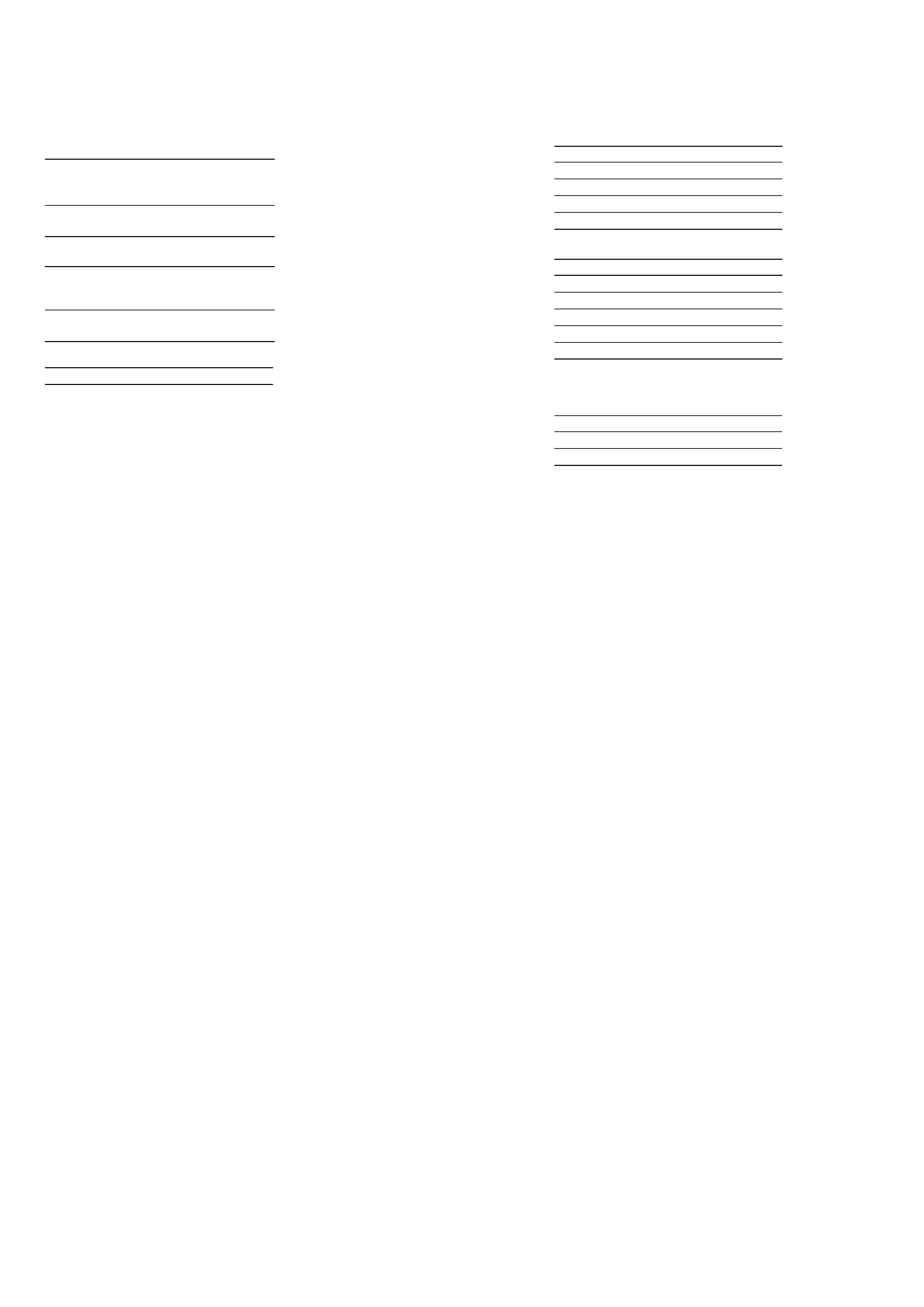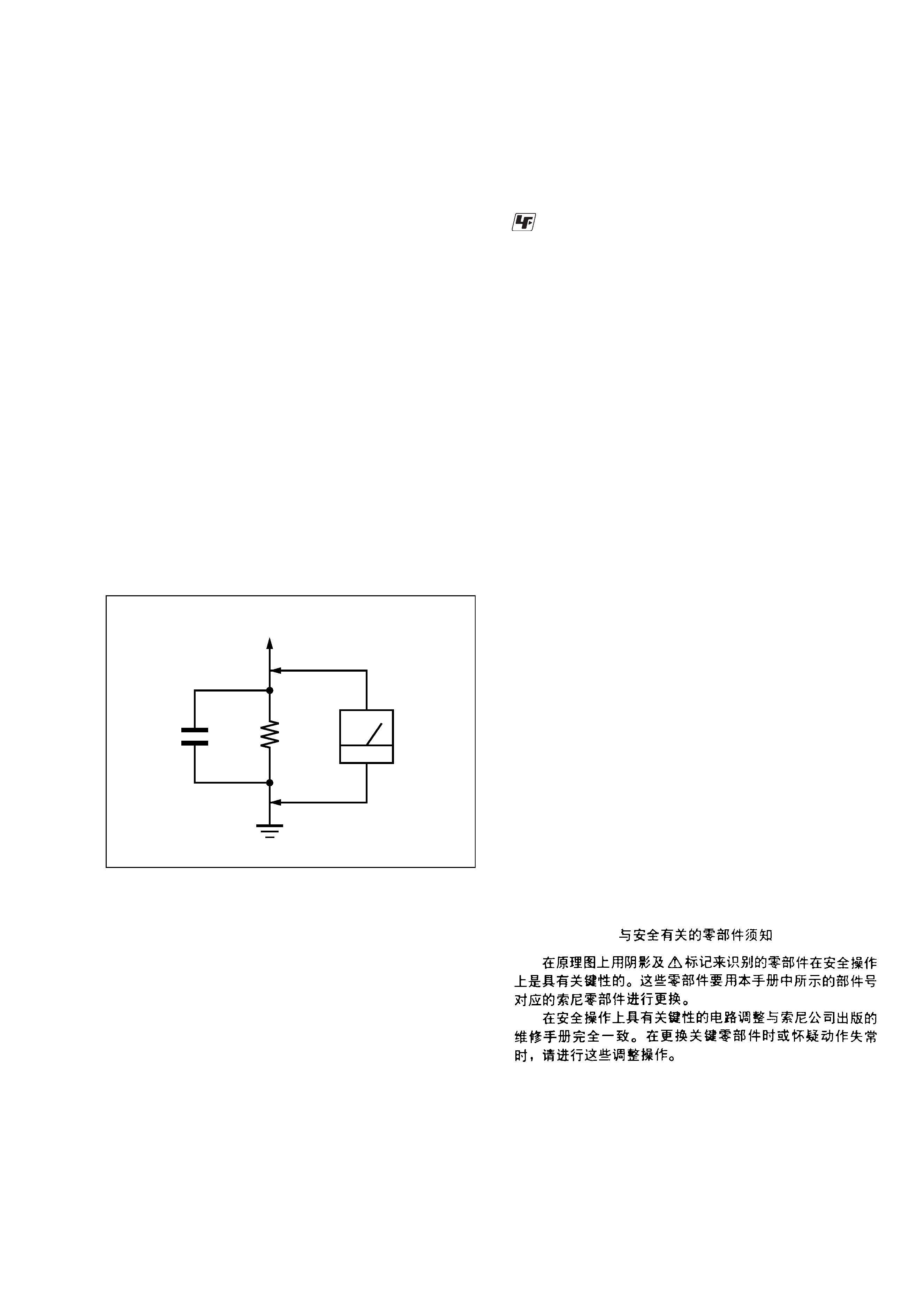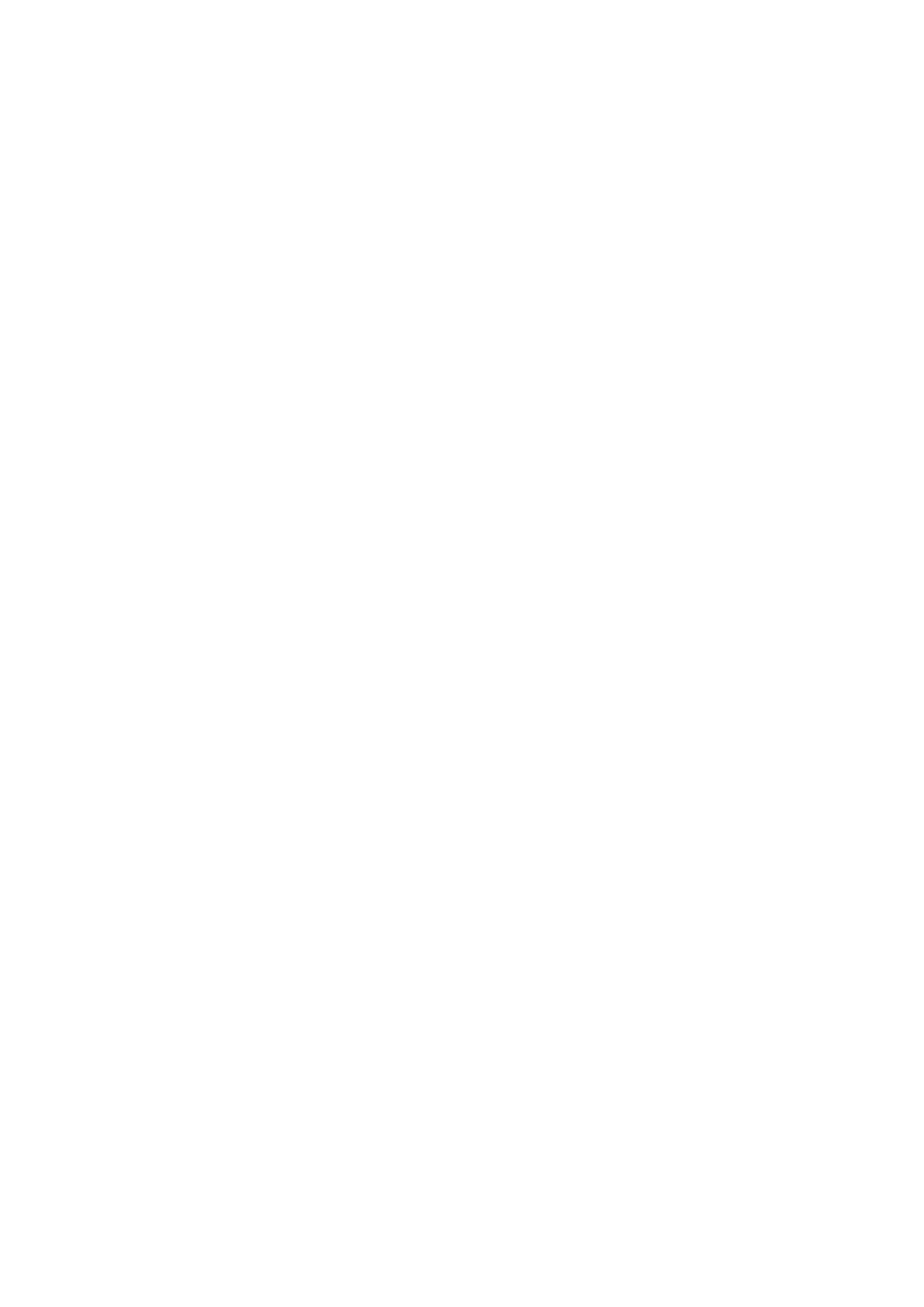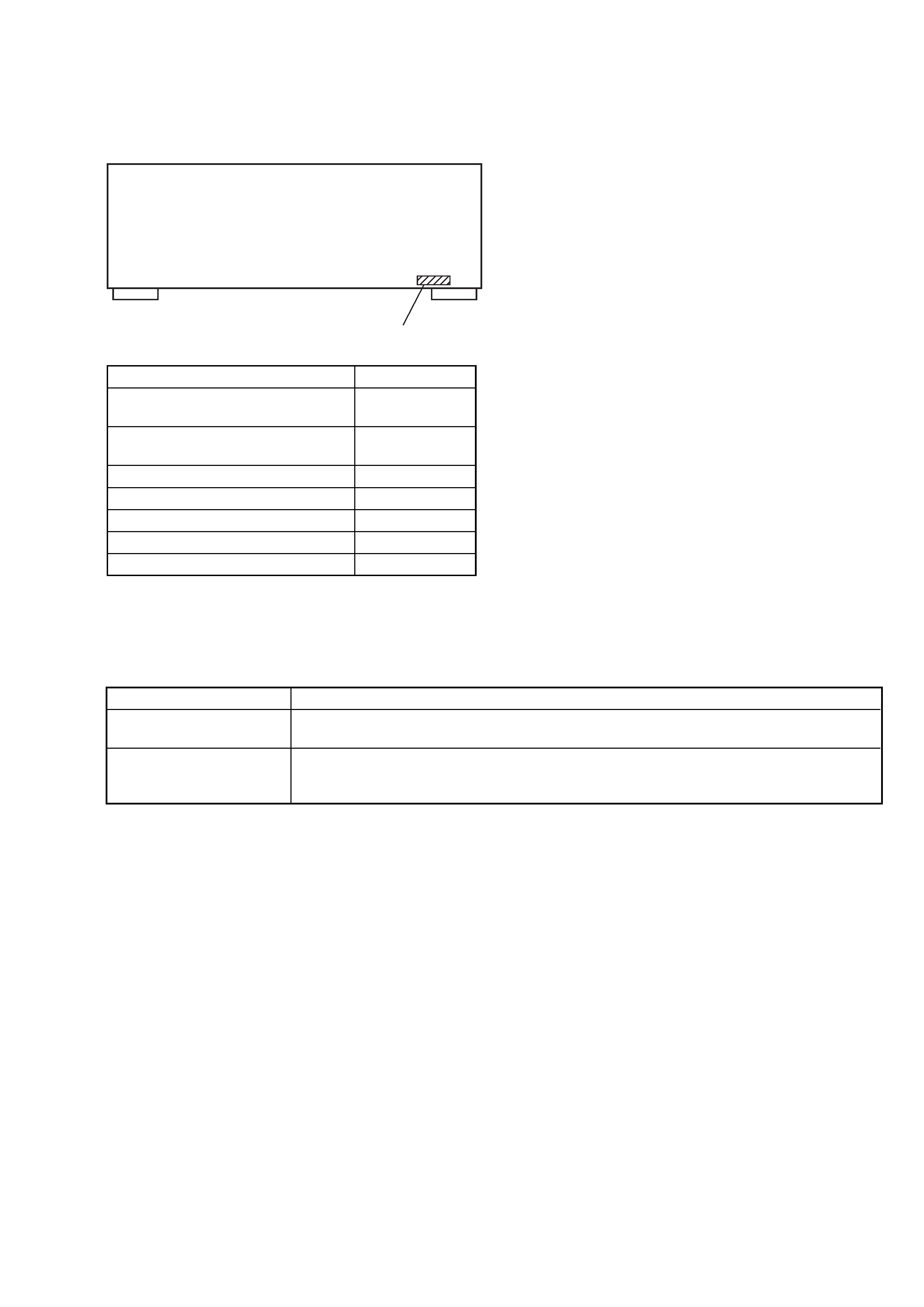
SERVICE MANUAL
FM STEREO FM/AM RECEIVER
SPECIFICATIONS
STR-DA1000ES/DB790
Photo: STR-DA1000ES
Ver. 1.4 2004.11
9-877-370-05
Sony Corporation
2004K05-1
Audio Group
© 2004.11
Published by Sony Engineering Corporation
US Model
Canadian Model
STR-DA1000ES
AEP Model
UK Model
E Model
Australian Model
Chinese Model
STR-DB790
Continued on next page
This receiver incorporates Dolby* Digital and Pro
Logic Surround and the DTS** Digital Surround
System.
* Manufactured under license from Dolby
Laboratories.
"Dolby", "Pro Logic" and the double-D symbol are
trademarks of Dolby Laboratories.
** "DTS" and "DTS Digital Surround" are registered
trademarks of Digital Theater Systems, Inc.
AUDIO POWER SPECIFICATIONS
POWER OUTPUT AND TOTAL HARMONIC
DISTORTION:
(Models of area code U only)
With 8 ohm loads, both channels driven, from
20 20,000 Hz; rated 100 watts per channel minimum
RMS power, with no more than 0.09% total harmonic
distortion from 250 milliwatts to rated output.
Amplifier section
POWER OUTPUT
STR-DA1000ES:
Rated Power Output at Stereo Mode
(8 ohms 20 Hz 20 kHz, THD 0.09%) 100 W + 100 W
(4 ohms 20 Hz 20 kHz, THD 0.09%) 80 W + 80 W
Reference Power Output
(8 ohms 20 Hz 20 kHz, THD 0.09%)
FRONT1): 100 W + 100 W
CENTER1): 100 W
SURR1): 100 W + 100 W
SURR BACK1):
100 W + 100 W
(4 ohms 20 Hz 20 kHz, THD 0.09%)
FRONT1): 80 W + 80 W
CENTER1): 80 W
SURR1): 80 W + 80 W
SURR BACK1):
80 W + 80 W
(8 ohms 1 kHz, THD 0.7%)
FRONT1): 100 W + 100 W
CENTER1): 100 W
SURR1): 100 W + 100 W
SURR BACK1): 100 W
(4 ohms 1 kHz, THD 0.7%)
FRONT1): 90 W + 90 W
CENTER1): 90 W
SURR1): 90 W + 90 W
SURR BACK1): 90 W
(8 ohms 20 Hz 20 kHz, THD 0.09%)
FRONT1): 90 W + 90 W
CENTER1): 90 W
SURR1): 90 W + 90 W
SURR BACK1): 90 W
(4 ohms 20 Hz 20 kHz, THD 0.09%)
FRONT1): 80 W + 80 W
CENTER1): 80 W
SURR1): 80 W + 80 W
SURR BACK1): 80 W
1) Depending on the sound field settings and the
source, there may be no sound output.
2) Measured under the following conditions:
3) Measured under the following conditions:
Frequency response
Inputs (Analog)
Area code
Power requirements
S
CN
P, MY, CEL, CEK, AU, 230 V AC, 50 Hz
TW
110 V AC, 60 Hz
Area code
Power requirements
KR
220 V AC, 50 Hz
PHONO
RIAA equalization curve
±0.5 dB
MULTI CH IN, CD/
SACD, MD/TAPE, DVD,
TV/SAT, VIDEO 1, 2, 3
10 Hz 100 kHz
+0.5/2 dB (when
ANALOG DIRECT is
selected)
PHONO
Sensitivity: 2.5 mV
Impedance: 50 kilohms
S/N3): 86 dB (A, 2.5
mV4))
MULTI CH IN, CD/
SACD, MD/TAPE, DVD,
TV/SAT, VIDEO 1, 2, 3
Sensitivity: 150 mV
Impedance: 50 kilohms
S/N4): 96 dB
(A, 150 mV5))
STR-DB790:
Rated Power Output at Stereo Mode
(8 ohms 1 kHz, THD 0.7%) 90 W + 90 W3)
(4 ohms 1 kHz, THD 0.7%) 80 W + 80 W3)
Reference Power Output2)

2
STR-DA1000ES/DB790
4) INPUT SHORT.
5) Weighted network, input level.
Inputs (Digital)
Outputs
EQ
FM tuner section
Tuning range
87.5 - 108.0 MHz
Antenna
FM wire antenna
Antenna terminals
75 ohms, unbalanced
Sensitivity
Mono:
18.3 dBf, 2.2
µV/75 ohms
Stereo:
38.3 dBf, 22.5
µV/75 ohms
Useable sensitivity
11.2 dBf, 1
µV/75 ohms
S/N
Mono:
76 dB
Stereo:
70 dB
Harmonic distortion at 1 kHz
Mono:
0.3%
Stereo:
0.5%
Separation
45 dB at 1 kHz
Frequency response
30 Hz 15 kHz,
+0.5/2 dB
Selectivity
60 dB at 400 kHz
AM tuner section
Tuning range
STR-DA1000ES:
530 1,710 kHz6)
(With 10-kHz tuning scale)
531 1,710 kHz6)
(With 9-kHz tuning scale)
STR-DB790:
531 1,602 kHz
(With 9-kHz tuning scale)
Antenna
Loop antenna
Usable sensitivity
50 dB/m (at 1,000 kHz or
999 kHz)
S/N
54 dB (at 50 mV/m)
Harmonic distortion
0.5% (50 mV/m, 400 Hz)
Selectivity
At 9 kHz:
35 dB
At 10 kHz:
40 dB
6) You can change the AM tuning scale to 9 kHz or 10
kHz. After tuning in any AM station, turn off the
receiver. While holding down PRESET TUNING +
or TUNING +, press ?/1. All preset stations will be
erased when you change the tuning scale. To reset
the scale to 10 kHz (or 9 kHz), repeat the procedure.
Video section
Inputs/Outputs
Video:
1 Vp-p, 75 ohms
S-video:
Y: 1 Vp-p, 75 ohms
C: 0.286 Vp-p, 75 ohms
COMPONENT VIDEO:
Y: 1 Vp-p, 75 ohms
B-Y: 0.7 Vp-p, 75 ohms
R-Y: 0.7 Vp-p, 75 ohms
DVD (Coaxial)
Impedance: 75 ohms
S/N: 100 dB
(A, 20 kHz LPF)
DVD, TV/SAT, MD,
VIDEO3 (Optical)
S/N: 100 dB
(A, 20 kHz LPF)
MD/TAPE (REC OUT),
VIDEO 1, 2 (AUDIO
OUT)
Voltage: 150 mV
Impedance: 2.2 kilohms
SUB WOOFER
Voltage: 2 V
Impedance: 1 kilohms
Gain levels
±10 dB, 1 dB step
General
Power requirements
Power consumption
Power consumption (during standby mode)
1 W
AC outlets
Dimensions
430 161 400 mm
including projecting parts
and controls
Mass (Approx.)
14.5 kg
Supplied accessories
FM wire antenna (1)
AM loop antenna (1)
STR-DA1000ES:
Remote commander RM-LG112 (1)
R6 (size-AA) batteries (2)
STR-DB790:
Remote commander RM-PP412 (1)
R6 (size-AA) batteries (2)
Design and specifications are subject to change
without notice.
Area code
Power requirements
U, CA
120 V AC, 60 Hz
CEL, CEK, AU
230 V AC, 50/60 Hz
SP, MY, KR, CN
220 230 V AC, 50/60 Hz
TW
110 V AC, 60 Hz
Area code
Power consumption
U290 W
CA
340 VA
CEL, CEK, AU
290 W
SP, MY, KR, CN
290 W
TW
290 W
Area code
AC outlets
U, CA
1 switched, 120 W/1A MAX
SP, MY, TW
1 switched, 100 W MAX
Ver 1.1
NOTE: Abbreviation
AU
: Australian model
CA
: Canadian model
CEK : UK model
CEL : AEP model
CN
: Chinese model
KR
: Korean model
MY : Malaysia model
SP
: Singapore model
TW : Taiwan model
U: US model

3
STR-DA1000ES/DB790
Notes on chip component replacement
·Never reuse a disconnected chip component.
· Notice that the minus side of a tantalum capacitor may be dam-
aged by heat.
Fig. A.
Using an AC voltmeter to check AC leakage.
1.5 k
0.15
µF
AC
voltmeter
(0.75 V)
To Exposed Metal
Parts on Set
Earth Ground
SAFETY CHECK-OUT
After correcting the original service problem, perform the follow-
ing safety check before releasing the set to the customer:
Check the antenna terminals, metal trim, "metallized" knobs,
screws, and all other exposed metal parts for AC leakage.
Check leakage as described below.
LEAKAGE TEST
The AC leakage from any exposed metal part to earth ground and
from all exposed metal parts to any exposed metal part having a
return to chassis, must not exceed 0.5 mA (500 microamperes.).
Leakage current can be measured by any one of three methods.
1. A commercial leakage tester, such as the Simpson 229 or RCA
WT-540A. Follow the manufacturers' instructions to use these
instruments.
2. A battery-operated AC milliammeter. The Data Precision 245
digital multimeter is suitable for this job.
3. Measuring the voltage drop across a resistor by means of a VOM
or battery-operated AC voltmeter. The "limit" indication is 0.75
V, so analog meters must have an accurate low-voltage scale.
The Simpson 250 and Sanwa SH-63Trd are examples of a pas-
sive VOM that is suitable. Nearly all battery operated digital
multimeters that have a 2 V AC range are suitable. (See Fig. A)
ATTENTION AU COMPOSANT AYANT RAPPORT
À LA SÉCURITÉ!
LES COMPOSANTS IDENTIFIÉS PAR UNE MARQUE 0
SUR LES DIAGRAMMES SCHÉMATIQUES ET LA LISTE
DES PIÈCES SONT CRITIQUES POUR LA SÉCURITÉ
DE FONCTIONNEMENT. NE REMPLACER CES COM-
POSANTS QUE PAR DES PIÈCES SONY DONT LES
NUMÉROS SONT DONNÉS DANS CE MANUEL OU
DANS LES SUPPLÉMENTS PUBLIÉS PAR SONY.
SAFETY-RELATED COMPONENT WARNING!!
COMPONENTS IDENTIFIED BY MARK 0 OR DOTTED
LINE WITH MARK 0 ON THE SCHEMATIC DIAGRAMS
AND IN THE PARTS LIST ARE CRITICAL TO SAFE
OPERATION. REPLACE THESE COMPONENTS WITH
SONY PARTS WHOSE PART NUMBERS APPEAR AS
SHOWN IN THIS MANUAL OR IN SUPPLEMENTS PUB-
LISHED BY SONY.
UNLEADED SOLDER
Boards requiring use of unleaded solder are printed with the lead-
free mark (LF) indicating the solder contains no lead.
(Caution: Some printed circuit boards may not come printed with
the lead free mark due to their particular size)
: LEAD FREE MARK
Unleaded solder has the following characteristics.
· Unleaded solder melts at a temperature about 40 °C higher than
ordinary solder.
Ordinary soldering irons can be used but the iron tip has to be
applied to the solder joint for a slightly longer time.
Soldering irons using a temperature regulator should be set to
about 350 °C.
Caution: The printed pattern (copper foil) may peel away if the
heated tip is applied for too long, so be careful!
· Strong viscosity
Unleaded solder is more viscou-s (sticky, less prone to flow)
than ordinary solder so use caution not to let solder bridges oc-
cur such as on IC pins, etc.
· Usable with ordinary solder
It is best to use only unleaded solder but unleaded solder may
also be added to ordinary solder.

4
STR-DA1000ES/DB790
1.
SERVICING NOTES ............................................... 5
2.
GENERAL ................................................................... 7
Location of Controls .......................................................
7
3.
DISASSEMBLY
3-1. Disassembly Flow ........................................................... 10
3-2. Case (414535) ................................................................. 11
3-3. COMP-V Board .............................................................. 11
3-4. Back Panel Block ............................................................ 12
3-5. Main Block ...................................................................... 12
3-6. DIGITAL Board .............................................................. 13
3-7. STAY-3/STAY-4/SP-B/SP-A/S-VIDEO/
VIDEO/VIDEO-AU/AU-IN Board ................................ 14
3-8. MAIN Board ................................................................... 14
4.
TEST MODE .............................................................. 15
5.
ELECTRICAL ADJUSTMENT ............................ 17
6.
DIAGRAMS
6-1. Block Diagram TUNER/VIDEO Section ................ 19
6-2. Block Diagram AUDIO DSP Section ...................... 20
6-3. Block Diagram AUDIO CONTROL Section .......... 21
6-4. Block Diagram AUDIO AMP Section ..................... 22
6-5. Block Diagram
DISPLAY/KEY CONTROL Section ........................ 23
6-6. Block Diagram POWER SUPPLY Section ............. 24
6-7. Note for Printed Wiring Boards
and Schematic Diagrams ................................................ 25
6-8. Printed Wiring Board
DIGITAL Board (Component Side) ......................... 26
6-9. Printed Wiring Board
DIGITAL Board (Conductor Side) ........................... 27
6-10. Schematic Diagram DIGITAL Board (1/4) ............. 28
6-11. Schematic Diagram DIGITAL Board (2/4) ............. 29
6-12. Schematic Diagram DIGITAL Board (3/4) ............. 30
6-13. Schematic Diagram DIGITAL Board (4/4) ............. 31
6-14. Printed Wiring Boards
VIDEO/VIDEO-AU Boards ..................................... 32
6-15. Schematic Diagram
VIDEO/VIDEO-AU Boards ..................................... 33
6-16. Printed Wiring Boards HP-V3/S-VIDEO Boards ... 34
6-17. Schematic Diagram HP-V3/S-VIDEO Boards ....... 35
6-18. Printed Wiring Board COMP-V Board ................... 36
6-19. Schematic Diagram COMP-V Board ...................... 37
6-20. Printed Wiring Board AU-IN Board ........................ 38
6-21. Schematic Diagram AU-IN Board ........................... 39
6-22. Printed Wiring Board MAIN Board ........................ 40
6-23. Schematic Diagram MAIN Board (1/3) .................. 41
6-24. Schematic Diagram MAIN Board (2/3) .................. 42
6-25. Schematic Diagram MAIN Board (3/3) .................. 43
6-26. Printed Wiring Board A-CLASS Board .................. 44
6-27. Schematic Diagram A-CLASS Board ..................... 45
6-28. Printed Wiring Boards
SBL/STAY/STAY2 Boards ....................................... 46
6-29. Schematic Diagram
SBL/STAY/STAY2 Boards ....................................... 47
6-30. Printed Wiring Boards
SP-A/SP-B/STAY3/STAY4 Boards .......................... 48
6-31. Schematic Diagram
SP-A/SP-B/STAY3/STAY4 Boards .......................... 49
6-32. Printed Wiring Boards
DISPLAY/FUN/VOL Boards ................................... 50
6-33. Schematic Diagram
DISPLAY/FUN/VOL Boards ................................... 51
6-34. Printed Wiring Boards
DC1/DC2/TH/4/8 SW Boards .................................. 52
6-35. Schematic Diagram
DC1/DC2/TH/4/8 SW Boards .................................. 53
6-36. Printed Wiring Boards
AC/PRI/SEC1/SEC3 Boards ..................................... 54
6-37. Schematic Diagram
AC/PRI/SEC1/SEC3 Boards ..................................... 55
6-38. IC Pin Function Description ........................................... 63
6.
EXPLODED VIEWS
7-1. Case Section .................................................................... 70
7-2. Chassis Section-1 ............................................................ 71
7-3. Chassis Section-2 ............................................................ 72
7-4. Main Block Section ......................................................... 73
7-5. MAIN Board Block ......................................................... 74
7-6. Chassis Section-3 ............................................................ 75
7-7. Front Panel Block-1 ........................................................ 76
7-8. Front Panel Block-2 ........................................................ 77
7-9. Front Panel Block-3 ........................................................ 78
8.
ELECTRICAL PARTS LIST ............................... 79
TABLE OF CONTENTS
Ver 1.3

5
STR-DA1000ES/DB790
SECTION 1
SERVICING NOTES
· MODEL IDENTIFICATION
Back Panel
PART No.
Model
PART No.
DB790
: AEP, UK
and Australian models
4-245-425-0[]
DB790
: Singapore and
Malaysia models
4-245-425-1[]
DB790
: Taiwan model
4-245-425-2[]
DB790
: Chinese model
4-245-425-3[]
DB790
: Korean model
4-245-425-4[]
DA1000ES : US model
4-245-425-6[]
DA1000ES : Canadian model
4-245-425-7[]
Ver 1.3
ERROR MESSAGES
If there is a malfunction, the display shows a code of two numbers and a message. You can check the condition of the system by message.
Refer to the following table to solve the problem.
messages
cause and response
DEC. EROR
Appears when the signal which the receiver can not decode (example DSD-CD) is input when
"DEC." is set to "DEC. PCM". Set to "DEC. AUTO".
PROTECT
Irregular current output to the speakers. Turn off the receiver and check the speaker connection.
Then turn on the power again. Be comes this display, When short current flowed with breakage of
the power MOS, or when detection resistor becomes open in connection with it.
